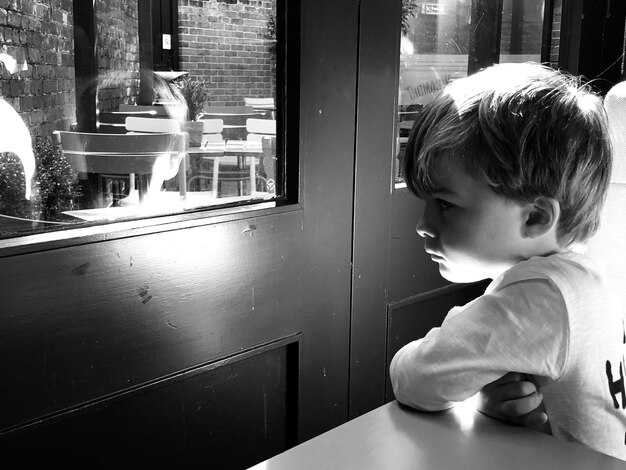Have you ever watched an avoidant partner disappear the moment things start to deepen, only to reappear weeks or months later as if nothing happened? It’s bewildering and painful, leaving you asking: why did they leave, why are they back, and will they stay this time? You’re far from the only person feeling this way. Avoidant partners tend to follow a recognizable sequence — they pull away, they come back, and certain conditions determine whether they remain. This piece will map out the five stages an avoidant typically moves through after a breakup, reveal the psychology behind their push-and-pull, and explain what genuinely anchors them in a relationship. By the time you finish reading, the signs will be familiar, the avoidant mindset clearer, and you’ll have a solid sense of what’s happening under the surface. When someone who fears closeness withdraws, it can feel devastating. One moment you’re connected — laughing together, maybe even planning ahead — and the next they’ve vanished. You replay conversations, replay moments, wondering, “Was it something I did? Did I push too hard? Am I to blame?” Hear this: you are not losing your mind and you are not inherently broken. That disorientation is a real reaction to loving someone who is alarmed by intimacy. Their distance ignites your anxiety, which in turn can push them further away — a painful feedback loop. The key is that their behavior has roots in how their nervous system protects them from closeness; it isn’t proof of being unlovable. Understanding that takes away the personal sting and returns your sense of agency. The first stage is the immediate post-breakup flight. While you may be left reeling, an avoidant often appears relieved — and there’s a reason. For them, ending the relationship signals an escape from pressure: emotional demands, intense closeness, perceived expectations. It feels, temporarily, like a huge weight has been lifted. They often plunge into distractions — overworking, new hobbies, travel, casual dating — anything that supports the story “I’m fine, I’m free.” But this is avoidance, not healing. It’s a numbing-out strategy, a way to avoid processing pain and vulnerability. They may even rationalize the split by casting blame outward. In short, their system has shut down rather than worked through the hurt. Stage two is when the narrative shifts: absence and nostalgia. After weeks or months of living distracted, the novelty of freedom fades and a sense of emptiness can settle in. Research and clinical observation both show that avoidant individuals commonly start to miss what they left behind, but this longing often comes later — not in the immediate aftermath, when they were still numbing. Once some time has passed, memory softens the edges: arguments, tension, frightening emotional moments recede, while the tender, mundane details stand out — your laugh, morning routines, trips you took together. This idealization happens because, from a safe distance, the relationship feels less threatening. Typically this nostalgia emerges several months after the breakup — often around five to seven months — which explains why, just as you begin to heal, their contact can suddenly reappear. The third stage is a cautious reconnection: testing the waters. Nostalgia motivates the avoidant to reach out, but rarely with dramatic declarations. They’re careful, tentative — the relational equivalent of touching the water’s edge to check the temperature. You’ll get small signals: a message like “Saw something that reminded me of you,” a like on an old post, or a low-stakes check-in. The explicit words mean less than the subtext: they’re asking whether it’s safe to come closer. How you respond matters. Overwhelming them with pressure or intense emotion will usually trigger an immediate retreat, whereas a warm, measured reply can communicate safety and openness. At this point, the fear of losing the connection can begin to outweigh the fear of intimacy, pulling them back in. Stage four is the reconnection high. After a period of silence, when an avoidant returns, it can feel intoxicating — attentive, affectionate, and sometimes more emotionally available than before. For a time, their attachment system re-engages and the needs they once shut down become activated again. It can genuinely feel like a second honeymoon. Still, this phase is precarious. The underlying avoidant tendencies and fears remain, and if the couple slips into old patterns — rushing commitment conversations, rehashing wounds, or overwhelming through constant texting — those latent fears can be re-triggered. The reconnection can be beautiful but fragile; it needs careful, steady handling. Stage five is the decisive crossroads. As everyday life resumes, intimacy and expectations begin to press in, and the avoidant’s alarm can sound once more. From here, two outcomes usually unfold. Option A: they lean in. The avoidant recognizes that the relationship is worth the discomfort and begins to tolerate vulnerability — showing up for difficult conversations, communicating more reliably, and making consistent efforts. This change is gradual and steady rather than theatrical. Option B: fear wins. They withdraw again, cancel plans, become emotionally distant, or claim busyness as a shield, and the old cycle reasserts itself. What determines which path unfolds is emotional safety: the partner’s steadiness, the avoidance of punitive pressure, and whether the avoidant is doing their own inner work. Without those supports, relapse into old habits is likely. Here’s the essential takeaway to carry with you: when an avoidant pulls away, it’s not automatically a reflection of your shortcomings. Their responses stem from wiring and defense mechanisms designed to protect them from feeling overwhelmed by closeness. Their return follows a pattern — absence breeds nostalgia, nostalgia fuels longing, and longing draws them back. Recognizing this cycle frees you from self-blame and reveals the broader dynamics at play. That clarity is empowering. Whether they ultimately stay or not, you will be okay — armed with understanding, you won’t be trapped in confusion any longer. The love you deserve shouldn’t require chasing or pleading; it should be given willingly and consistently. When that standard is clear, it’s easier to refuse anything less. If this content brought clarity, please subscribe — fresh insights and practical tools are shared regularly to help untangle confusion and build healthier connections. Remember: whether the avoidant partner chooses to remain or moves on, your story continues. You are more resilient, wiser, and fully deserving of a love that chooses you back. Look for the next video, and in the meantime, prioritize your own well-being first.

Practical guidance to use when an avoidant returns
- How to respond when they reach out: Keep responses calm, brief, and grounded. Examples: “Good to hear from you. I’m doing well — would you like to catch up next week?” or “I appreciate you reaching out. I’m open to talking, but I need consistency if we’re going to reconnect.” Avoid emotional chasing, long lists of grievances, or immediate pressure for commitment.
- Set clear, compassionate boundaries: Decide what you will and won’t accept (e.g., repeated last-minute cancellations, ghosting, or avoiding tough conversations). State those boundaries plainly and follow through. Boundaries aren’t punishment; they’re information about how you need to be treated to feel safe.
- Watch for signs of real change: Look for sustained, concrete behaviors over time — consistent communication, keeping plans, owning mistakes without defensiveness, and making small, reliable efforts. Words without follow-through are not proof of transformation.
- Common red flags: Grand apologies with no behavioral change, love-bombing followed by withdrawal, gaslighting (minimizing your experience), or using busyness as a perpetual excuse. If the pattern repeats despite clear boundaries, it’s unlikely to stop without deep personal work on their part.
- Communication tools that help: Use “I” statements (“I feel hurt when plans are canceled last minute”), request specific changes, and schedule low-pressure check-ins. Avoid ultimatums that box them into reactive shutdowns; instead, frame consequences as your limits (“If this continues, I’ll need to step back to protect myself”).
- Support your own healing: Reinvest in friends, hobbies, therapy, and routines that stabilize you. Practices like journaling, grounding exercises, and mindfulness reduce reactivity and help you respond rather than react when the avoidant toggles between closeness and distance.
- When to seek professional help: If the cycle is chronic and emotionally draining, couples therapy with an attachment-informed clinician or individual therapy (EFT, IFS, trauma-informed CBT) can help. Work is meaningful only if the avoidant is willing to engage in it.
- Deciding whether to stay or leave: Ask whether the relationship overall improves your life, whether you feel respected, and whether change is consistent and mutual. If repeated patterns erode your well-being, walking away is not failure — it’s choosing health. Staying requires mutual commitment and ongoing work; leaving can be the healthiest choice when that commitment isn’t there.
Helpful resources
- Books: Attached (Amir Levine & Rachel Heller), Hold Me Tight (Sue Johnson).
- Therapy types to consider: Emotionally Focused Therapy (EFT), Internal Family Systems (IFS), trauma-informed therapy.
- Self-help practices: mindfulness, grounding techniques, journaling prompts about needs and limits, and trusted friends or support groups for perspective.
Final note: curiosity beats judgment. Learning the avoidant pattern gives you clarity and power to choose what you will accept and how you will protect your heart. You deserve someone who can tolerate discomfort and choose you consistently — not intermittently. Prioritize your safety, clarity, and healing first.



 The 5 SHOCKING Stages of an Avoidant Coming Back (Nobody Tells You #5)">
The 5 SHOCKING Stages of an Avoidant Coming Back (Nobody Tells You #5)">

 When Your Avoidant Ex Realizes They Lost the Best Thing… Forever | Best Motivational Speech">
When Your Avoidant Ex Realizes They Lost the Best Thing… Forever | Best Motivational Speech">
 The Point of No Return: 5 Signs an Avoidant Relationship Is Over (Even If You’re Still Together)">
The Point of No Return: 5 Signs an Avoidant Relationship Is Over (Even If You’re Still Together)">
 Dating Rules to To Help YOU Stop Doing EVERYTHING For Your Mate">
Dating Rules to To Help YOU Stop Doing EVERYTHING For Your Mate">
 Is My Partner a Narcissist? (Does it matter)">
Is My Partner a Narcissist? (Does it matter)">
 Why Avoidants Disrespect You and The Secret Battle They’re Fighting | Avoidant attachment style">
Why Avoidants Disrespect You and The Secret Battle They’re Fighting | Avoidant attachment style">
 The Childhood Reason You Still Feel Empty Inside">
The Childhood Reason You Still Feel Empty Inside">
 How to Handle Difficult & Toxic People – Take Back Your Peace and Power">
How to Handle Difficult & Toxic People – Take Back Your Peace and Power">
 The Exact Price Avoidants Pay For Losing You.">
The Exact Price Avoidants Pay For Losing You.">
 Relationships Can’t Survive without THIS">
Relationships Can’t Survive without THIS">
 LOVE won’t be enough to SAVE your Relationship!">
LOVE won’t be enough to SAVE your Relationship!">